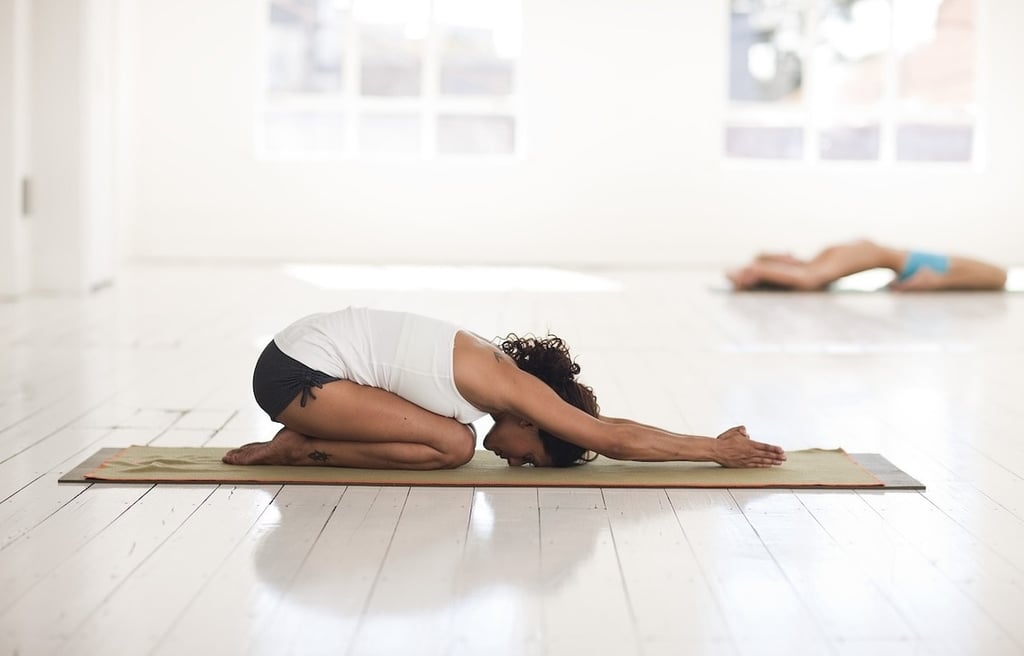MANAGING CHRONIC PAIN WITH YOGA
In recent years, an increasing number of individuals with chronic pain have turned to complementary and alternative therapies, including yoga.
Chronic pain is a pervasive health issue affecting millions worldwide, impacting both physical and mental well-being.
Managing chronic pain with yoga


Traditional approaches to pain management often involve medications that may have side effects and limited effectiveness. In recent years, an increasing number of individuals with chronic pain have turned to complementary and alternative therapies, with yoga emerging as a prominent and evidence-supported option. This article delves into the multifaceted benefits of yoga in managing chronic pain, exploring its impact on physical, mental and emotional well-being.
Chronic pain is an ache, discomfort… that persists for an extended period, often beyond the typical time for healing. It can result from various conditions such as arthritis, fibromyalgia or lower back issues. Often, the impact of chronic pain extends beyond the physical, affecting emotional and mental health. This tends to lead to anxiety, depression and a diminished quality of life.
Yoga as a Holistic Approach to Chronic Pain Management
Yoga is an ancient practice that originates from India, with roots dating back thousands of years. The practice has evolved over time, drawing inspiration from various Indian philosophical, spiritual and physical traditions. The earliest references to yoga can be found in ancient Indian texts such as the Rigveda, Upanishads and the Bhagavad Gita. The classical systematisation of yoga is credited to the sage Patanjali, whose "Yoga Sutras" provide a foundational guide to the philosophy and practices of yoga. Over centuries, yoga has transformed and diversified into various styles and approaches, gaining popularity worldwide for its physical, mental and spiritual benefits.
Yoga is also gaining recognition as a holistic approach to health and wellness. Conventional treatments often focus primarily or even solely on symptom relief. On the other hand, yoga recognises and addresses the interconnectedness of the mind and body. Its holistic nature makes it a promising option for those seeking comprehensive chronic pain management.
Physical Benefits of Yoga for Chronic Pain
1. Improved Flexibility and Joint Health
One of the primary physical benefits of yoga is enhanced flexibility and improved joint health. Many chronic pain conditions, such as arthritis, are associated with stiffness and reduced range of motion. Yoga's gentle and controlled movements promote flexibility, helping individuals regain mobility and alleviate discomfort.
2. Strengthening Muscles and Supporting the Spine
Certain yoga poses focus on strengthening specific muscle groups. This can be particularly beneficial for individuals with chronic pain, especially in the back and neck. Building strength in the core muscles supports the spine, reducing strain and promoting better posture. These are essential elements in managing conditions like chronic lower back pain.
3. Increased Circulation and Reduced Inflammation
The rhythmic breathing exercises (pranayama) and gentle movements in yoga enhance blood circulation. This, in turn, promote the delivery of oxygen and nutrients to affected areas. Improved circulation can contribute to reducing inflammation, a common factor in chronic pain conditions.
Yoga for Mental and Emotional Well-being
1. Stress Reduction and Cortisol Regulation
Chronic pain is often exacerbated by stress, which triggers the release of cortisol, a hormone associated with inflammation. Yoga incorporates mindfulness and relaxation techniques that help manage stress. By doing this, it also regulates cortisol levels, potentially reducing pain intensity.
2. Mind-Body Connection and Pain Perception
Yoga emphasises the mind-body connection. It encourages individuals to not just notice the pain, but to become more aware of their bodies and sensations. This heightened awareness can alter the way and intensity somebody may perceive pain. This way, it enables individuals to develop a more adaptive and positive relationship with their pain.
3. Emotional Resilience and Coping Strategies
Living with chronic pain can take a toll on mental health, leading to conditions such as anxiety and depression. Yoga provides a holistic approach to emotional well-being. It does this by promoting mindfulness, self-compassion and the development of effective coping strategies. These psychological benefits are crucial in fostering emotional resilience in the face of chronic pain.
Yoga as a Complementary Therapy
1. Integrative Approach to Pain Management
Yoga is increasingly recognised as a complementary therapy, working alongside conventional medical treatments to address the multidimensional aspects of chronic pain. Integrative pain management approaches often combine medication, physical therapy and psychological interventions. Undoubtedly, yoga, with its multifaceted nature can be part of that comprehensive and personalised care plan.
2. Customisation for Individual Needs
Yoga is inherently adaptable, making it suitable for individuals of all fitness levels and abilities. Experienced instructors can tailor yoga sessions to accommodate specific chronic pain conditions, ensuring that participants engage in movements and poses that are safe and effective for their unique needs.
Research and Scientific Evidence
A growing body of scientific research supports the efficacy of yoga in managing chronic pain. Numerous studies have demonstrated positive outcomes in conditions such as osteoarthritis, rheumatoid arthritis, fibromyalgia and chronic lower back pain. These studies highlight the potential of yoga as a safe and effective adjunct to traditional pain management strategies.
A systematic review and meta-analysis on the effectiveness of yoga for low back pain carried out by Cramer et al in 2013, showed a strong evidence for short and long-term effects on pain.
Kan et al, published another systematic review on the effects of yoga on pain, mobility and quality of life in patients with knee osteoarthritis in 2016. It showed that, the effects of yoga on pain relief and function improvement were evident after only two weeks.
In 2015, Moonaz et al looked at the effects of yoga in sedentary adults with arthritis. They concluded that, preliminary evidence suggested that yoga may help sedentary individuals with arthritis
Carson et al concluded in 2016 that mindful yoga training improved symptoms, functional deficits and coping abilities of those suffering from fibromyalgia. Furthermore, those benefits were replicable and could be maintained 3 months after treatment.
Another study by Kisan et al (2014) suggests that headache frequency and intensity were reduced more in those practising yoga, when compared with people treated with conventional care. Also, Nayar et al (2022) found that yoga was a good adjunct to medication in the management of migraine headache.
Eygor et al also found yoga helpful in alleviating shoulder and arm pain on people who had breast cancer.
A pilot RCT by Schmid et al in 2019, found yoga helpful for people with chronic pain, to help improve depression, engagement in activities and occupational performance. Melvin Donaldson also referred to yoga as a promising means of improving reslience and clinical outcomes for people with chronic pain.
Increasingly, more scientific papers are highlighting the benefits of yoga for those who experience chronic pain.
Challenges and Considerations
While yoga offers substantial benefits for chronic pain management, it is essential to acknowledge potential challenges. Individuals should consult healthcare professionals before starting a yoga practice, especially if they have existing health conditions or concerns. Additionally, instructors should have adequate training and experience in adapting yoga practices for individuals with chronic pain.
The benefits of yoga in managing chronic pain extend far beyond physical flexibility and strength. By addressing the interconnected aspects of physical, mental and emotional well-being, yoga provides a holistic approach to pain management. As scientific evidence continues to accumulate, yoga is gaining recognition as a valuable and accessible tool in the comprehensive care of individuals living with chronic pain. Embracing the healing power of yoga offers hope for those seeking alternatives to conventional pain management, fostering a path towards improved quality of life and overall well-being.
SUBSCRIBE
Subscribe for updates on latest posts and to follow what is happening in the home of Target Pain.


